In 2016, we interviewed Mary Jane Miller about the ancient, meditative art of iconography. At the end of March, Miller traveled from her home in San Miguel, Mexico to Lewes, Delaware to share this gift. The Sacred Icon Retreat was held from March 28-April 1 at Saint Peter’s Church. Ten students, one all the way from Utah, immersed themselves into the contemplative art form.
Miller teaches regularly in Mexico. She takes her students through the process of iconography from start to finish. The paint contains the egg, the potential for life, and dirt which represents eternity and connection to God as the creator. Every step contains a spiritual message, from the materials, the symbolism of each layer of paint, and the subjects in the image themselves. The work transcends the canvas as the process affects each student individually. Miller continues to lead workshops not because of the icons that are created, but because of the individual experiences that take place.
Iconography is not about the hand holding the brush, but about the soul’s communication with a higher power during that time. As an instructor, she says, “I try to watch carefully how people become vulnerable, or become powerful, or become confused, and try to fit the teaching to each one of those people.” Miller sees “how diverse we all are as humans,” but finds perfectionism to be a common struggle that could counter-act the process. Her student’s words are a testament to the message that iconography is an art form that transcends the self.
Olaive Jones, Lewes resident and member of Saint Peter’s church, came to the workshop because the concept resonated with her. Even though Jones is a painter, she says iconography is new for her, and not just because of the particularity of the style. “It’s a different relationship to the creative process, removing the ego more and more from the process and from attachment to the result.” This happens when the painter approaches the work spiritually. “In the iconography, it’s not about the painter at all—the painter is removed in a sense and the direct information of God through your hand is what creates [the work].” Jones said that this study of iconography was teaching her how to “pray into the speaking” of the image itself as it develops.
Of Miller, she says, “She’s living the work and you can feel it as it comes through her and in the way that she teaches.”
Chaplain Julie Vesely found the Sacred Icon Retreat when she google searched ‘ocean, contemplation, and art.’ “I’m here to kind of figure out what’s the next step in what I want to teach and convey to people.” Four years ago, Vesely decided to use her creativity in her work by leading art and soul workshops. “I was asked to work in behavioral health units in our hospitals and create groups that would bring spirituality. I became a spiritual director and facilitated processes that combine spirituality and art.” Vesley works with people who have a diverse assortment of wounds. The challenges in each setting are different, but the people have one thing in common. “Art speaks to a different part of them. When they are unwilling or unable to talk, some of that [pain] can still come forward and heal.”
Ken Abremski began painting after he retired in 2010. He’s taken three iconography workshops so far. “Everybody’s icons turn out beautifully. It’s amazing to see how people come in with no experience and they’re guided through.” He became interested in iconography to find a different form of expression for his prayer time. “I like the way that each of the components relates back to something—the earth, the heavens, the sky, the colors. It’s very rewarding that way…there’s a spiritual aspect behind it.”
What continues to surprise Miller about the workshops is “how many times I am reminded that we don’t do anything alone. We do the icons together as a group and we are assisted by some kind of energy that has its own agenda, and has its own influence over us, and therefore we’re assisted. We’re being seen, in a sense. I need to be reminded of it all the time. I think that’s why I keep teaching. I keep thinking ‘I’m the one that’s doing it’ but I’m not the one that’s doing it. There is no ‘I’, there’s only a ‘we’ and the ‘we’ is going to make peace in the world.”
Maintaining a peaceful space is a part of what Miller hopes to impart on her students. “My desire for them is to try to take that kind of understanding out into the world and realize that we’re a very diverse, dynamic planet of human beings. We may be ruining the planet (ha!) but unless we learn how to get along, we’re toast.” It isn’t just about peace among the students. Contemplation opens a space within each person as they face the reality of human imperfection. Acceptance allows a greater, spiritual work to move through the individual.

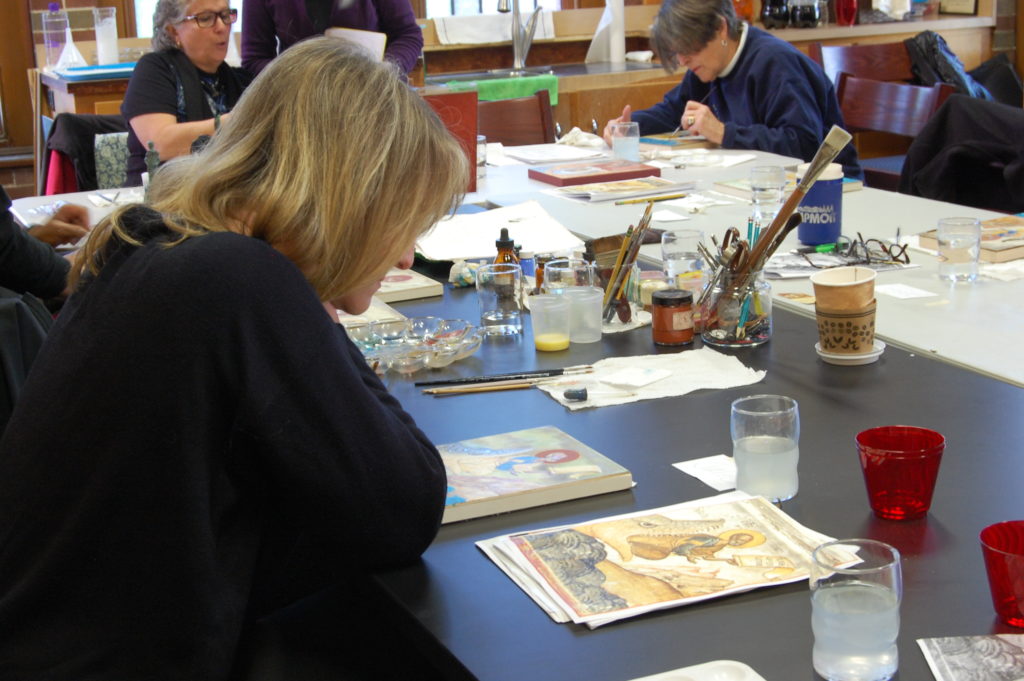
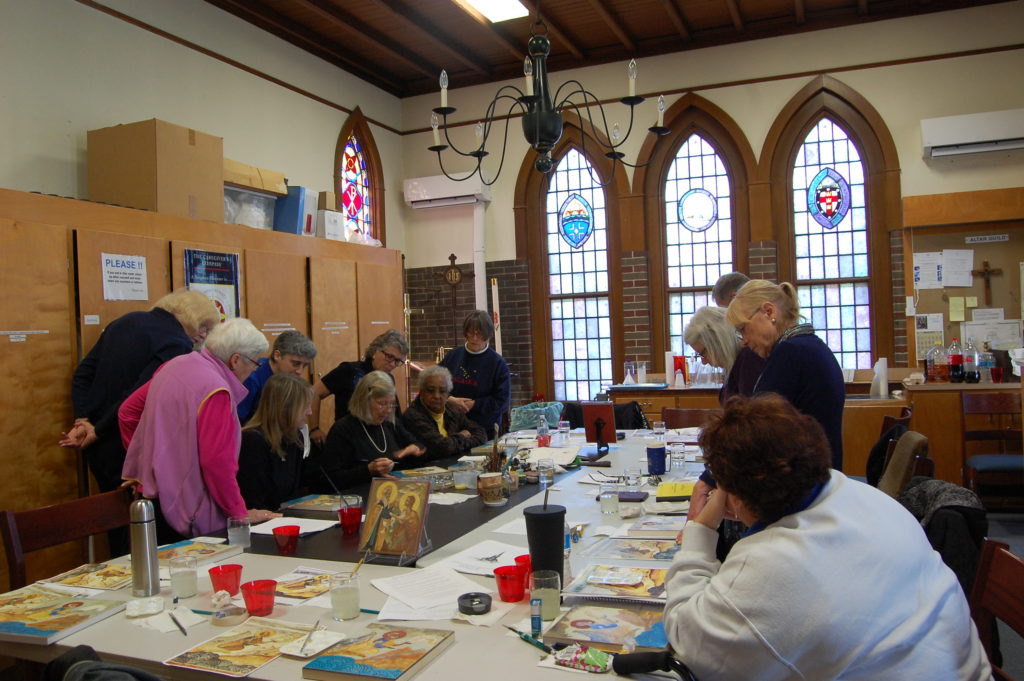
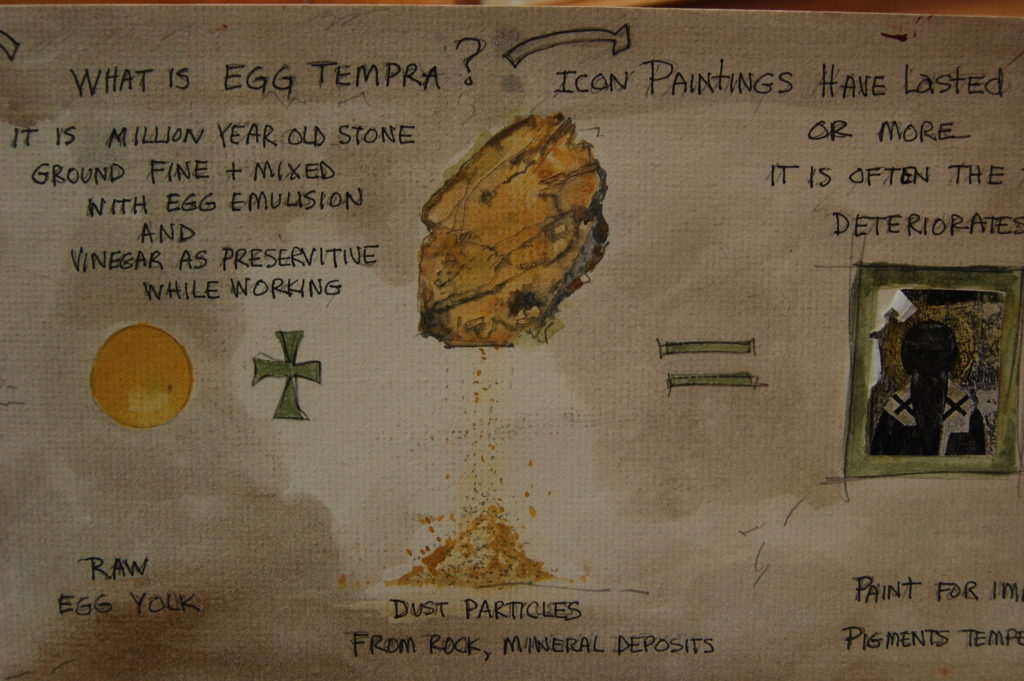


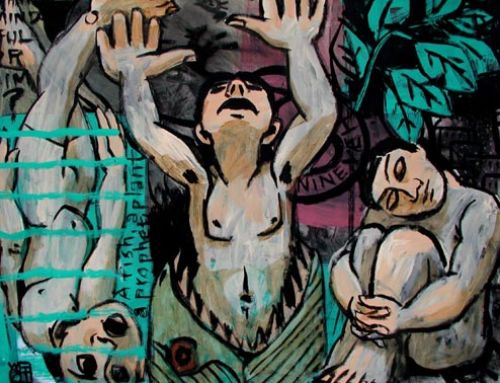
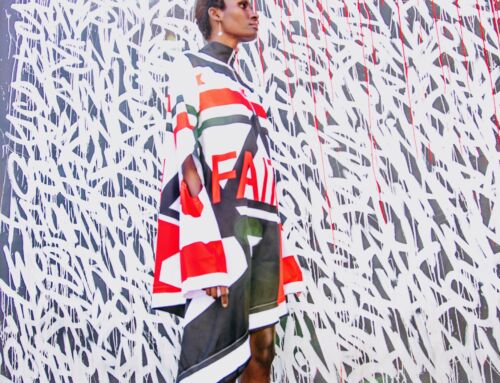
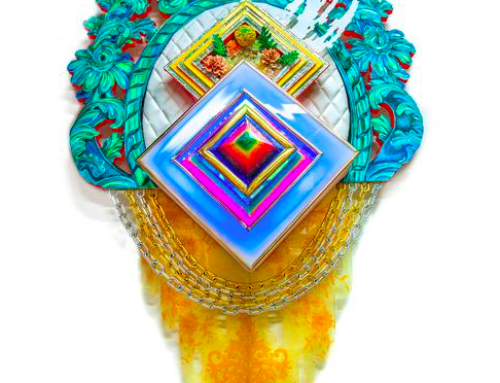
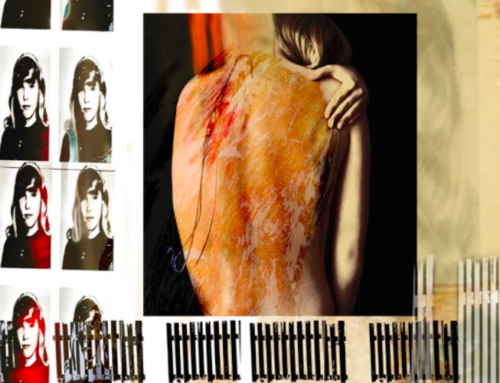
[…] https://intlfineartfund.com/sacred-icon-workshop/ […]